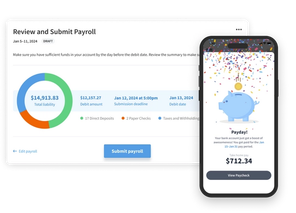
Eddy’s HR Mavericks Encyclopedia
The world's largest free encyclopedia of HR, with 700+ HR articles and podcasts.
Created by Eddy and our HR Mavericks community.
Hiring Statistics
Hiring is a complex process. It requires stellar communication skills, timely outreach, a clear strategy, and a host of other elements. This article brings together hiring statistics from reliable sources to cast some light on the best hiring practices and techniques. Keep reading to learn what research tells us about where to find candidates, what candidates are looking for in their future employer, and how your company can adapt to today’s competitive hiring market.
Hiring is a complex process. It requires stellar communication skills, timely outreach, a clear strategy, and a host of other elements. This article brings together hiring statistics from reliable sources to cast some light on the best hiring practices and techniques. Keep reading to learn what research tells us about where to find candidates, what candidates are looking for in their future employer, and how your company can adapt to today’s competitive hiring market.
Next steps
You’ve seen the numbers. Now, let’s take a look at the steps you can take to implement the findings from this article.
- Reevaluate how you use technology when hiring. The stats make it clear that the most successful recruiters use HR software (like an applicant tracking system) and utilize online job boards and social sites. If you’re not already doing so, make a plan to start.
- Measure candidate experience. New hires and rejected applicants alike are more helpful to your company brand if they have a good candidate experience. Use a metric like the candidate net promoter score to see how you’re doing and learn what to improve.
- Tell applicants what your company has to offer. We know that people are looking for remote work opportunities, companies that value DEI, and jobs with good salaries and benefits. Make these things selling points in both job posts and interviews.
Topics

Eddy
Eddy is the all-in-one HR tool built with you in mind. The robust features and ease of use will benefit your company both inside and outside your HR team.
Other Related Terms
Eddy’s HR Mavericks Encyclopedia
Hiring Statistics
Hiring is a complex process. It requires stellar communication skills, timely outreach, a clear strategy, and a host of other elements. This article brings together hiring statistics from reliable sources to cast some light on the best hiring practices and techniques. Keep reading to learn what research tells us about where to find candidates, what candidates are looking for in their future employer, and how your company can adapt to today’s competitive hiring market.
Hiring is a complex process. It requires stellar communication skills, timely outreach, a clear strategy, and a host of other elements. This article brings together hiring statistics from reliable sources to cast some light on the best hiring practices and techniques. Keep reading to learn what research tells us about where to find candidates, what candidates are looking for in their future employer, and how your company can adapt to today’s competitive hiring market.
Next steps
You’ve seen the numbers. Now, let’s take a look at the steps you can take to implement the findings from this article.
- Reevaluate how you use technology when hiring. The stats make it clear that the most successful recruiters use HR software (like an applicant tracking system) and utilize online job boards and social sites. If you’re not already doing so, make a plan to start.
- Measure candidate experience. New hires and rejected applicants alike are more helpful to your company brand if they have a good candidate experience. Use a metric like the candidate net promoter score to see how you’re doing and learn what to improve.
- Tell applicants what your company has to offer. We know that people are looking for remote work opportunities, companies that value DEI, and jobs with good salaries and benefits. Make these things selling points in both job posts and interviews.
Topics

Eddy
Eddy is the all-in-one HR tool built with you in mind. The robust features and ease of use will benefit your company both inside and outside your HR team.
Other Related Terms
Eddy's HR Newsletter
Sign up for our email newsletter for helpful HR advice and ideas.


